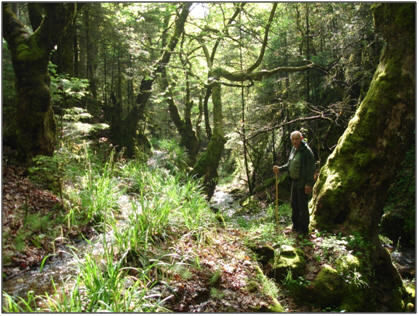LIST OF SITES
A. Visited
The watermill is about 2km up
the valley towards Dimaina from the gorge at the
village of Nea Epidavros. Its exact location is
[37.6836, 23.1053]. There were another 10 or so
watermills further downstream. A big storm in 1967
destroyed all the others but buried this one in an
almost pristine condition under tons of stones,
trees, sediments.
There are two mills in cascade
(A and B) lost in olive groves between Ano and Palio
Velies villages. Not restored but in fair condition.
The central location is [36.7109, 22.9507], ca 700m
SE of centre of old Velies.
There are two more watermills
further down the valley according to an old man,
unconnected to the first two, but I could not find
them in the limited time available on this visit.
Reconstructed watermill
operating for visitors in normal hours. Talana is a
village ca 10km W of Monemvasia. There are circa 11
watermills on a trail west towards the sea , only
the highest restored. Its coordinates are [36.6703,
22.9335].


The valley leading north down
from Evrostina towards Derveni on the coast has
about 20 (?) old water mills of which the highest is
by the village of Evrostina. Saw probable remains of
the first one, but did not have time to investigate
further. The coordinates are [38.0711, 22.3962].
At bridge on the road ca1km W
of Nomia towards Kalives, under a cliff overhang.
The water tower and mill house are in reasonable
shape, but I could not access the turbine chamber.
Location [36.6555, 22.9955]
The watermills there (across
the bay from Navplion and about 200m N of the
classical site of Lerna) were famous as, with their
rugged constructions, they served to stop the move
of Ibrahim Pasha’s army north towards Navplion
through an ambush by Greek forces in 1825.
Unfortunately very little remains of them now. Myli,
which means mills, is so-called after the ‘Myli of
Lerna’. Location [37.5521, 22.7176].
(Visited & photos by Alex
Seferiades)
Roughly 28km NNW of Karpenisi
in the south Pindus range, near the village of
Kerasochori in SW of the Agrafa region. The village
of Agrafi is at [39.1482, 21.6622], but the mill
referred to is some kilometers away. The Anavasi
hiking maps have a lot of the watermills marked, so
there is infinite exploration to be done.
Concerning Agrafa, the mill is
on a small tributary to the river of Fteri, which in
turn is a tributary of Agrafiotis river. The final
shoot I guess was of wood, judging from the only
remaining vertical piece. This is about a couple of
hours walk from the closest road. The waterfall is
just above the mill, a small channel dug in the rock
used to lead the water to just above the mill. The
water tower is of wood. The Apatito gorge is another
half hour upstream, stunning and daunting.
From a friend:
“I talked to my
Friend Anna Vidali about the water mills in Milies
(in Pilion, near Volos). She told me that
there are two such mills in the area. If you are
interested you can talk to Fei Stamati (tel.
24230-86672 or 24230-86437) or Despina Politi (tel.
24230- 86361) that know about them. Fei has
written a book on Milies.”
Gunpowder mill(s) nearby on
Lousios River. Restored as was famous during the
Greek war of independence ca 1822. There were 90
watermills for tanneries, grain, washers etc,
including a gunpowder one now restored into a
museum.
Photos from Alex Seferiades/Tolis
of a mill near there. Exact location not available
at the moment.
Seven mills in Milopotamos
gorge.
Collaboration of partners in
Greece Cyprus Italy Egypt Morocco Jordan to document
water uses through time:
... the HYDRIA project uses water as a ‘vehicle’ to
unfold the diverse, yet common, tangible and
intangible Mediterranean cultural heritage, through
reviving some representative ancient water
management visions, concepts and techniques of the
distant and more recent past. The project aims to
shed light to cases demonstrating the wisdom of our
ancestors, which evolved hand-in-hand with the
environment, or, on the other hand, to cases showing
the catastrophic implications when civilisations did
not respect and adapt to water availability and
geo-climatic peculiarities. Moreover, the project
aims to demonstrate that this past wisdom in the
area of water collection, storage and transfer can
be properly combined with modern technological
innovations to help address today’s needs in harmony
with the environment. Adapting peoples’ consuming
behaviour and management patterns to more
sustainable ones is an indirect long-term goal of
the project.
The project endorses several case studies from
Mediterranean countries. These are presented via a
series of texts, photographic material and
animations, where appropriate, to explain the
operation of complex water works. In the case
studies links are made to cultural elements that
depict how societies evolved around the water
resources. Also, in each case study the current
status of the remnants is presented and further
references are proposed for the interested readers.
Marmaroti - Very similar pair
to the Velies pair above

This shows diagrams of the
workings.
Maroulis - contemporary reconstruction.Similar to Velies.
Kokkos - ditto, in operation till
1966, not reconstructed.
Karageorgis (Mesi Potamia)
-ditto, now turned into a house.
Engares/Kinidaros area - main
building rebuilt, no details but water still passes
through.
[where links are to photos, the
location attribution seems occasionally inaccurate
or ambiguous]
Dimitsana, central Peloponisos:
there were 90 watermills for tanneries, grain,
washers etc, including a gunpowder one now restored
into a museum.
Near
Tseria, Mani, Peloponisos: there were many in Viros River below Zaharias
Several in
Andros

Mavrilo, Fthiotida

Edessa, Pella:
vertical mill

Pilion?

Lassi area, Kefalonia:
at sink holes, vertical wheel
Lefkada:
photo of a ruined building, no location details

Thebes, Ayi Theodori district:
best preserved in the area; so-called “Roman” mill
with big vertical wheel

Kythira, Pisso Pigadi: there
should be quite a lot around in Kythira

Stropones, Evvia:
horizontal wheel

Souli, Epiros:
ruins

Katakolo, Ilia: Museum of Ancient
Greek Technology, model of Greek wheel etc

Zakros, E Crete:
Watermill and museum

Richtis Gorge, Sitia Crete:

Mili Gorge, nr Choromonastiri,
Rethymnon Crete
... and many others in Crete
Other
references
On water mills in Central
Crete, N. G. Calvert, Newcomen Society 1973/4



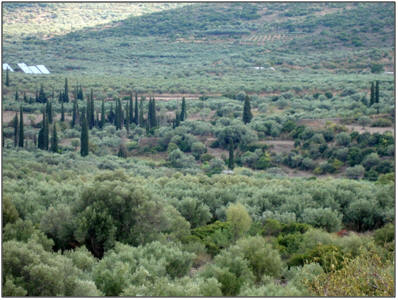
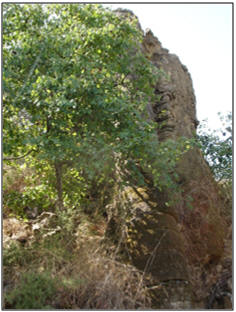
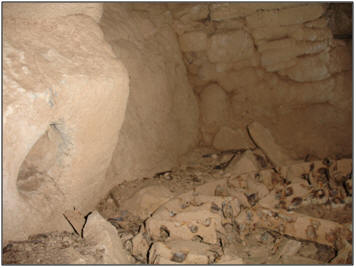
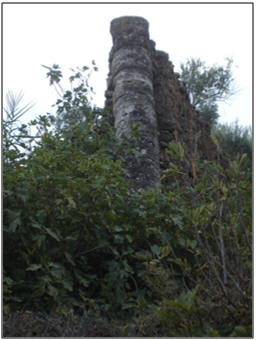
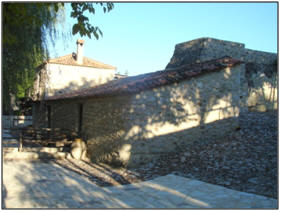
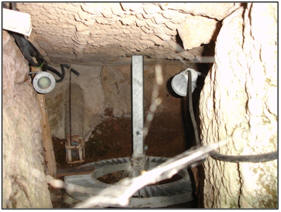

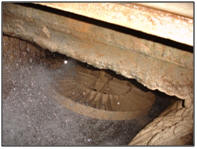
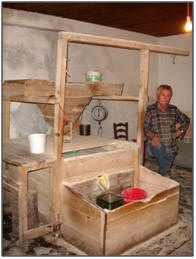
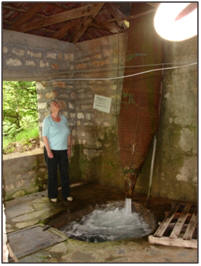



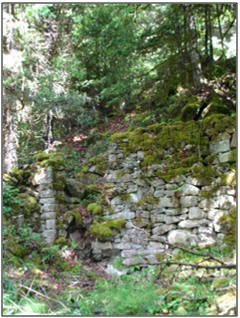 Mill A
Mill A
